The amazing science behind fatal snake bites
- Published

Snake venom is deadly, with as many as 100,000 people worldwide dying each year from snake bites.
The World Health Organization has added 'snakebite' to its list of neglected tropical diseases, external, but what is the real scale of the problem it faces against such a vicious venom?
Terrifying toxins
Snake venom is made up of several hundred proteins which all have a slightly different toxic effect on the human body. One snake's poison may not be like another's, even if they are from the same species.
But, on the whole, there are two main ways snakes make us suffer - by attacking the circulatory system (ie. the blood) and/or the nervous system.
Haemotoxic venom goes for the bloodstream. It can trigger lots of tiny blood clots and then when the venom punches holes in blood vessels causing them to leak, there is nothing left to stem the flow and the patient bleeds to death.
Other venoms can increase blood pressure, decrease blood pressure, prevent bleeding or create it. They are all bad news.
Neurotoxic venom tends to act more quickly, attacking the nervous system and stopping nerve signals getting through to the muscles.
This means paralysis, starting at the head, moving down the body until, if untreated, the diaphragm is paralysed and the patient can't breathe. A classic sign of this is ptosis, when people can't keep their eyes open.
Around the area of the bite, necrosis can set in. That happens when the venom destroys nearby muscles, tissues and cells. Long-term, this can lead to amputations, the loss of the use of a limb or the need for multiple skin grafts.

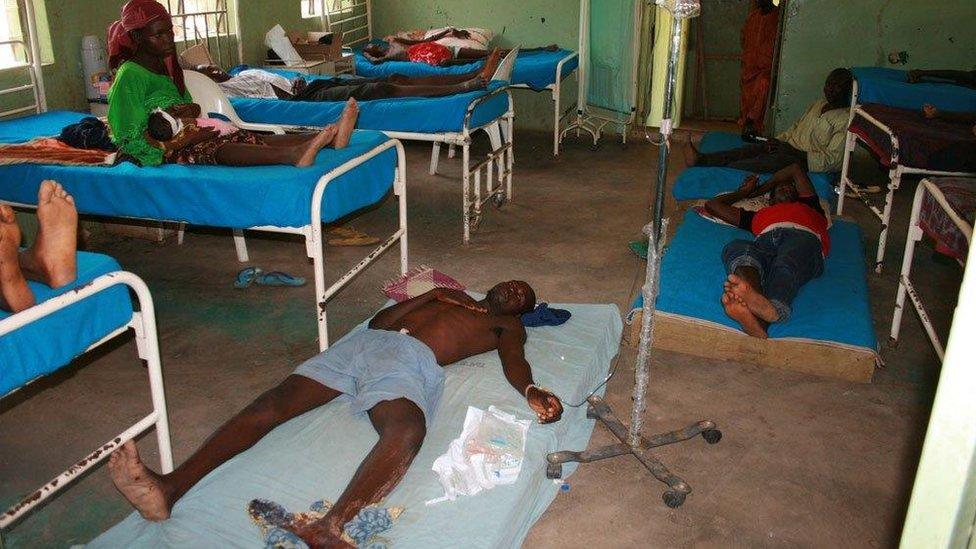
Hospitals with antivenom can see up to 30 patients with snake bites in one day in NE Nigeria
Grade A killer
Snakes get closer to humans and cause more damage and more deaths than any other venomous animal, including spiders, scorpions and jellyfish.
That's because venomous snakes are found across large swathes of the planet, typically in rural, tropical areas, like sub-Saharan Africa and south-east Asia. But they also live in Australia and North America.
Since snakes lurk on the ground, often camouflaged and unseen, farmers, rural workers and many young children can easily disturb them and get bitten.
Each year, up to five million people worldwide are estimated to be bitten by snakes. Out of those, around 100,000 die and 400,000 are left disabled or disfigured by their injuries.
But the numbers could be even larger - because many of the worst-affected countries don't keep data on snakebites and research into this problem is scarce.

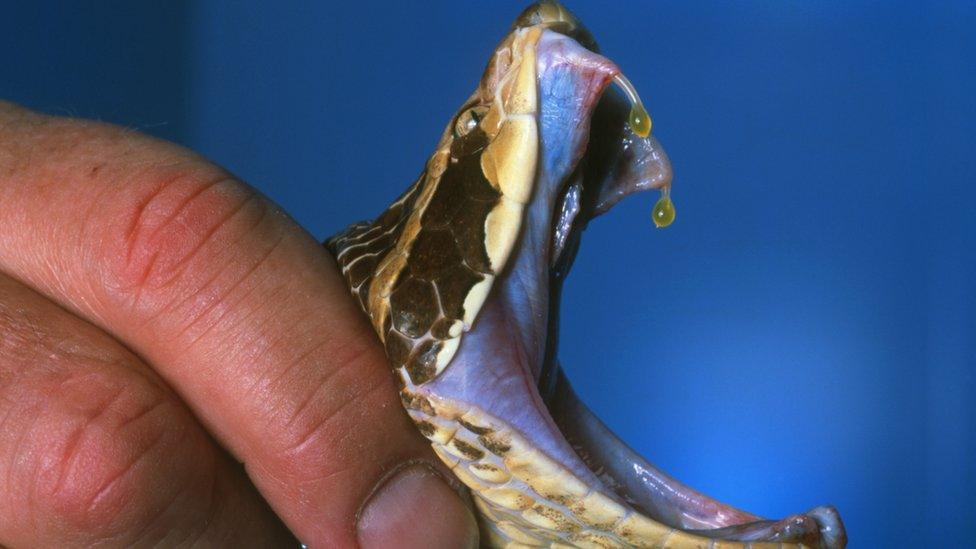
Snake venom is used to produce anti-venom to treat snake bites by injecting it into animals in small quantities
What's the cure?
Anti-venoms. These life-saving antidotes to snake bites are made by extracting venom from snakes then injecting it diluted into sheep or horses, which build up antibodies against it.
These antibodies are then separated from the animal's blood and used to make anti-venom - but there's a problem.
Anti-venoms are expensive and only produced in limited quantities. Few ordinary people can afford them and governments and health officials have shown little interest in training medical personnel to diagnose and treat venomous snake bites.
Anti-venoms which have been proven to be safe and effective are rare - and one of the best is running out.
So now the race is on to make another one.
Researchers at the Liverpool School of Tropical Medicine are busy collecting venom from deadly snakes in order to develop a new generation anti-venom treatment against the bite of every dangerous snake in sub-Saharan Africa, where snake bites kill about 30,000 people each year.
But experts are still unsure whether a single, universal anti-venom (which targets many types of venom from different snakes) is better than separate anti-venoms which target specific snake species in specific regions. Both are probably worth having.

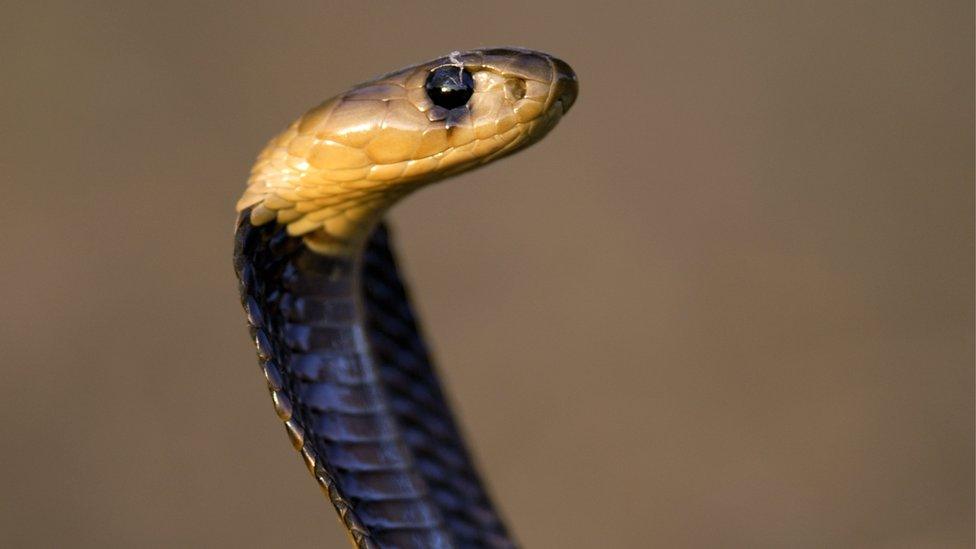
The cape cobra from south-western Africa is considered the most toxic and dangerous of the African cobras - a bite can kill a man in 30 minutes
Venoms are becoming more toxic
Snake venom is a white or yellow-coloured liquid which is produced in glands behind the snake's eyes and is pumped down a duct to the fangs when it bites down on something or someone.
The fangs acts like a hypodermic needle, injecting the venom quickly and efficiently into the unsuspecting victim.
Snakes with fangs at the front of their mouths are most dangerous - such as the cobra, puff adder, viper, rattlesnake and mamba, for example.
The venom produced by the snake's ancient ancestor was relatively simple. But research suggests that it has diversified over time and now venoms are more complex and more toxic than ever before.
Venoms can vary, even within snake species and within the same country, causing different effects on the body and responding differently to the same anti-venom.


Children are at a particularly high risk of snake bites
Does a snakebite hurt?
It does, apart from when you don't know you've been bitten.
Snakes called kraits, which live in south Asia, have a painless bite. They are known for slithering into homes when the inhabitants are asleep, usually on beds on the floor.
The victim might be disturbed a little but is likely to go back to sleep, and in the morning they wake up paralysed - or not at all.
For most other snakes, there's the pain felt from the initial bite, as the fangs sink into the skin, and then the pain created by the venom as it starts to work - causing inflammation, clotting the blood, causing skin cells to self-destruct.

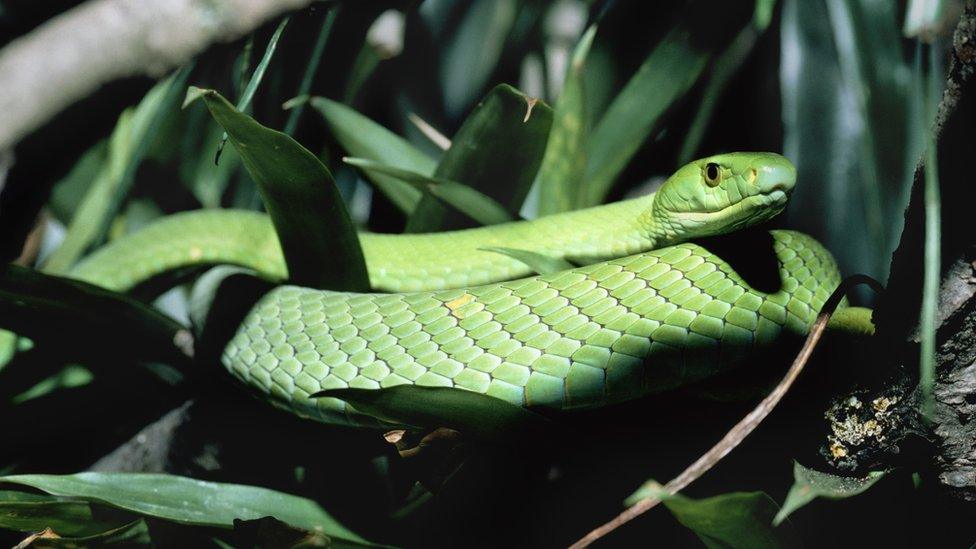
An eastern green mamba, found in the forests of eastern Africa
Sucking out venom is not advised
There are plenty of myths about how to deal with being bitten by a snake, so don't be fooled.
There is no evidence at all that sucking out venom from a snakebite with the mouth or using any other suction device helps. In fact, experts say it could hasten the venom's passage into the bloodstream.
Cutting out the venom is not recommended either because it could make the wound much worse.
In some countries, especially in remote areas where health services are scarce, natural remedies are often used to try to treat the bites but this only delays how long it takes to get to hospital.
After a bite, victims should not move the affected limb unless they have to, keep their heart rate as low as possible until they reach hospital and receive the appropriate anti-venom treatment, ideally as quickly as possible.
- Published8 September 2015
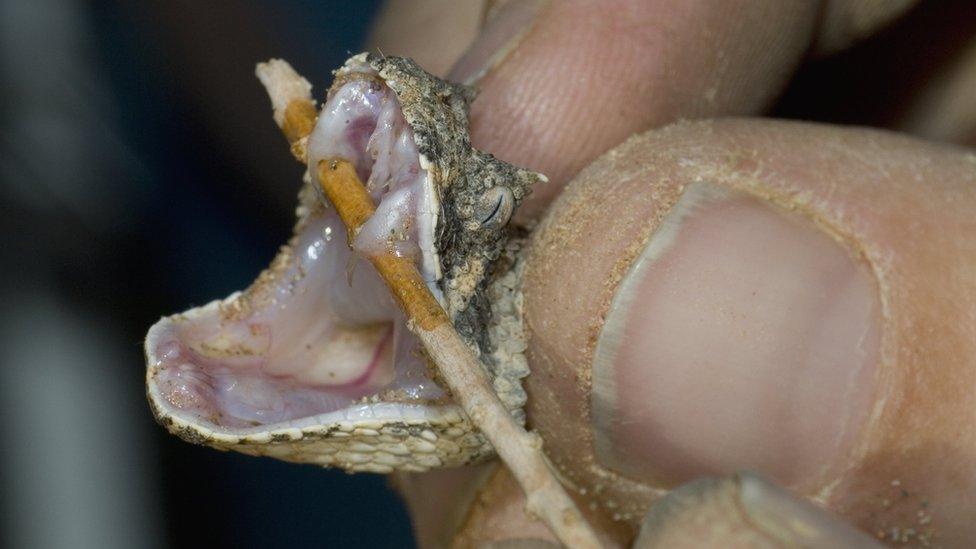
- Published8 September 2015
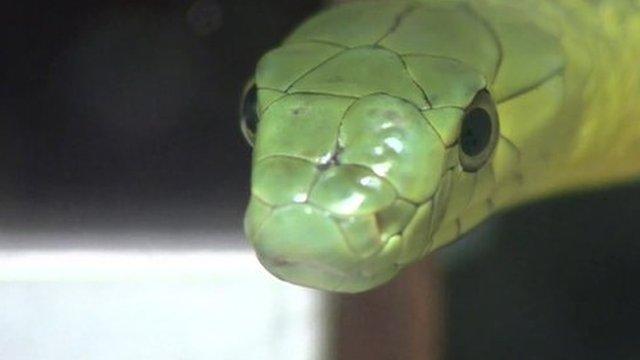
- Published15 January 2015
